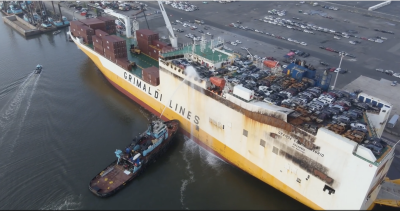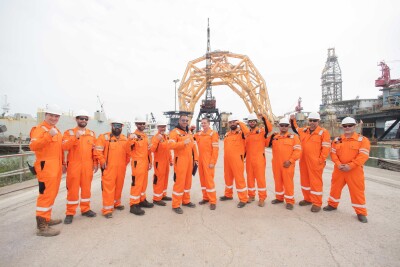The U.S. Department of Energy will spend up to $28 million to foster new technology designs for a future generation of lighter weight, more powerful floating offshore wind energy turbines.
In theory U.S. offshore wind energy potential is estimated to be equivalent to 1 trillion cubic feet of natural gas, but “nearly 60% of that wind energy—the equivalent of the entire U.S. annual electricity consumption—blows across waters more than 200 feet deep, an area that cannot be economically accessed today,” according to a prospectus released Feb. 1 by the department’s Advanced Research Projects Agency-Energy (ARPA-E) program.
Turbines installed on sea floor foundations on the outer continental shelf “are currently designed to be large and heavy to replicate more familiar onshore wind turbine dynamics, maintain stability, and survive storms,” DOE officials wrote. “However, this approach fundamentally limits how inexpensive FOWTs (floating offshore wind energy turbines) can ever become.”
The department is looking for proposals using control co-design methodologies, bringing together disciplines from across the realm of engineering, sciences and technology to work concurrently on designing lighter, more powerful floating turbines.
“Radically new designs that do not require a massive floating platform – applying the CCD approach of substituting mass by control systems – are needed,” according to the proposal.
Department officials dubbed the effort ATLANTIS, for Aerodynamic Turbines, Lighter and Afloat, with Nautical Technologies and Integrated Servo-control.
“The United States has 13,000 miles of shoreline, which is a huge opportunity to lead the world in capitalizing offshore wind,” said Secretary of Energy Rick Perry in announcing the effort. “The ATLANTIS projects will help advance American offshore wind production and the accompanying job, manufacturing, and investment growth for the nation.”
The world’s first floating wind turbine project is the Hywind Scotland array by Norway-based Equinor (formerly Statoil) that became operational in 2017. In the U.S. research work includes the Maine Aqua Ventus effort, led by the University of Maine, to make offshore wind power practical in the deep water of the Gulf of Maine. Federal officials and wind power developers are looking at the potential for floating turbines in wind energy areas off the U.S. West Coast.
Floating offshore wind turbine technology “has tremendous promise to access wind resources in these areas, but the current state of the art for FOWT is too massive and expensive for practical deployment,” according to the DOE ATLANTIS document. “Atlantic seeks to design radically new FOWTs by maximizing their rotor-area-to-total-weight ratio while maintaining or ideally increasing turbine generation efficiency; build a new generation of computer tools to facilitate FOWT design; and collect real data from full and lab-scale experiments to validate the FOWT designs and computer tools.”



.png.small.400x400.png)
